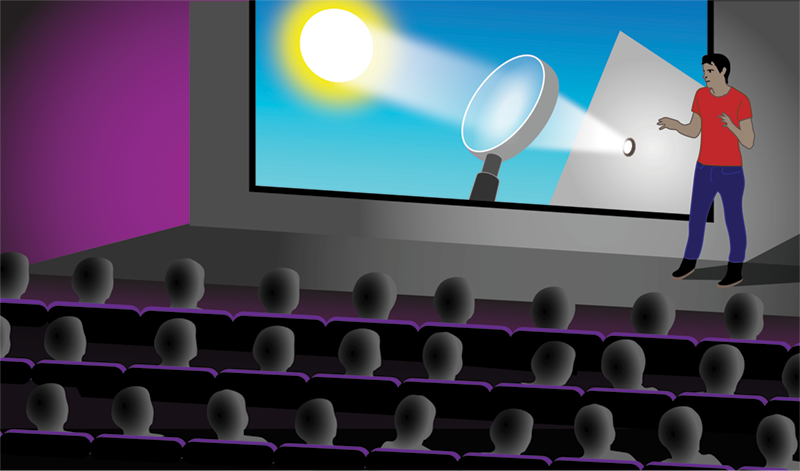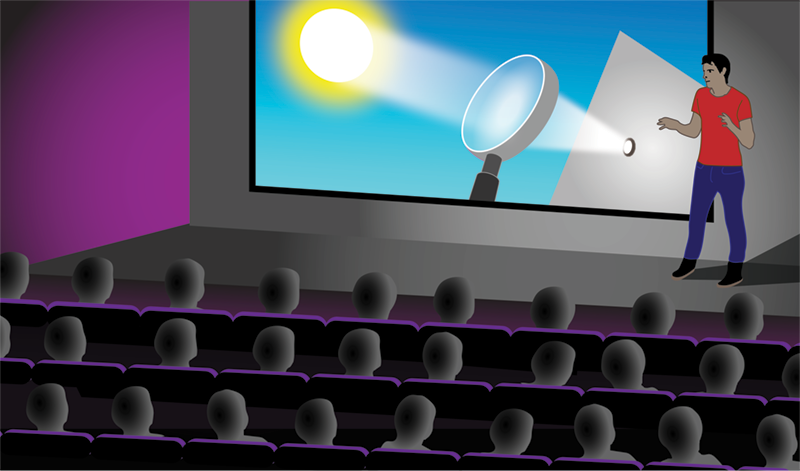Presentation Counts—Just Ask Galileo
Galileo had a problem. He was not independently wealthy, and he had grown weary of constantly securing patronage in small amounts from various members of 17th-century Italian nobility. So, he decided to target the Medici family—the super-rich of Galileo’s time—as permanent patrons to support his work. Artful presentation was key to appealing to his new audience. Thus, when Galileo discovered four of Jupiter’s moons, he named them the Medician stars. When presenting his findings to the family patriarch Cosimo II, he cast them in terms more astrological than astronomical, painting a picture of the heavens that reflected the Medici family’s glory. He even commissioned a special emblem, showing Jupiter and the stars, to serve as both a visual aid and a gift. His approach worked: the Medici became the enduring patrons whom Galileo sought.
While Galileo’s pandering to the Medici may seem extreme and scientifically unethical from our perspective, there is an important lesson to learn in his approach—presentation counts. Our world of funding through government grants and corporate investment has different standards, but the need to present yourself and your research in ways that speak to those you are trying to influence remains the same. Developing good communication skills is essential to successful interactions with funding agencies, industrial employers, and scientists outside your research niche.
Presenting science to other scientists seems like it should be easy. But how many times have you been to a seminar on a seemingly interesting topic only to be quickly lost in a flood of minutia and specialist detail? Unfortunately, everyone is prone to giving talks like that because of a cognitive bias called the curse of knowledge. Basically, we forget how hard it is to learn the things we know, so we assume that others will easily understand what we grasp so clearly. The problem grows as the knowledge gap between you and your audience increases. Yet, for most physicists, speaking to nonspecialists is the norm rather than the exception. Between 2003 and 2016, roughly 70,000 degreed physicists in the US left academia and joined industry, a number that represents 58% of physics graduates during that period (see the 2019 APS report The Impact of Industrial Physics on the U.S. Economy for details).
With these numbers in mind, soon-to-be-graduates should learn to lean heavily on two tools—background and framing—whenever they speak to people outside of their immediate research circle. Provide ample background information that gives your audience the context necessary to appreciate your work. And always frame your talk by explicitly stating the takeaway message up front. This framing rule applies to both the overall presentation and each major chart or technical point as you go. Never assume the audience will figure out what you mean, or why they should care, on their own.
The first step to a successful presentation is understanding your audience so you can correctly calibrate these tools. Ask questions in advance about who will be in your audience and what their background is. Next, craft your presentation so that it starts from a point of common ground with your listeners. For example, when I was a researcher working on plasma wakefield accelerators—a potentially compact alternative to particle accelerators based on microwave cavities—I would jump right into specifics at a small workshop for specialists. For a broader physics audience, I would start by explaining how transient electric fields induce oscillations in a plasma. For the general public, I would kick off with the difference between atoms, nuclei, and electrons.
Finally, tell a story. Follow the thread of increasing specialization through your field from the starting point of common ground to your unique contribution or point. Then reiterate your takeaway message as succinctly as possible using an audience-appropriate level of concepts and terminology. For my general-audience accelerator presentations, I likened my work on so-called plasma lenses (devices for focusing electron beams) to burning paper with a magnifying glass on a sunny day. Again, it depends on whom you are talking to, but you will probably spend two-thirds or three-quarters of your time providing the background story in an effective talk. That might seem like a lot, but it sets up the audience to understand and appreciate your final point. The audience feels smart when they come away with the sense that they understood what you had to say, which is the psychological key to an effective presentation that counts.
Disclaimer: Dr. Thompson's views are his own and do not necessarily represent the views of BAE Systems, Inc.





